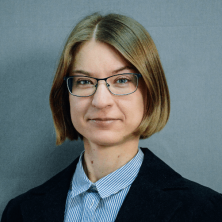Since the beginning of 2016, the VoxCheck project has checked more than 4,000 statements made by Ukrainian politicians; in terms of the number of mentions, the medical reform and healthcare are one of the most popular domains (accounting for more than 5%). In October 2018, Vadym Rabinovych even called Ukraine “Suprunia,” saying that if the Parliament is unable to dismiss Ulana Suprun, this means that Suprun must in fact be the person in control of our country. In response, the flashmob #СупруніЯ was launched in social networks. Which literally means “Suprun and me”.
The material was created within the framework of the project “Do not Believe Myths” with the support of the International Renaissance Foundation.
In this article we recall the most popular myths regarding the work of the Ministry of Healthcare that have been spread by Ukrainian politicians.
Myth No. 1: The MoH headed by Suprun deprived the Ukrainians of free healthcare. Yet this right is provided for by Article 49 of the Constitution
This is a manipulation. One cannot be deprived of something that exists purely formally. The Constitution of Ukraine does provide for free medical assistance; in practice, however, since many years ago (long before Suprun came to the MoH) nearly half of the total medical expenses were paid out of the Ukrainians’ pockets. For more information, see the Project (Un)paid Medicine from the NGO “Patients of Ukraine.”
Among other things, the MoH reform provides for the introduction of the concept of “guaranteed package of medical services.” As of today, it includes nearly all possible medical services and the state guarantees payment for them (except for dental care and esthetic medicine services):
- urgent medical aid;
- primary medical aid;
- secondary (specialized) medical aid;
- tertiary (highly specialized) medical aid;
- palliative medical aid;
- medical rehabilitation;
- medical aid to children under 16 years of age;
- medical aid in connection with pregnancy and childbirth.
That is, in actual fact the accusations leveled at the MoH are groundless: the requirement of the Constitution is complied with and medical services continue to be free of charge. It is, however, a least-evil solution rather than a manifestation of generosity. Since 2016, the MoH has been trying to implement the principle of co-payment, when people officially pay for a part of the medical services instead of making unofficial payments to doctors. The first version of the law on healthcare funding provided for full payment by the state only for primary and urgent medical aid, whereas the patients would have to partially pay, together with the state, for specialized services (gastroenterological, urological, etc.). But politicians blocked that law and approved a version of it requiring that the state fully pay practically for all medical services.
Since the amount of finance that Ukraine can spend on healthcare is limited, the list of guaranteed services may shrink someday; in that case the people will have to pay in full for services outside the guaranteed package, rather than reimburse a part of the cost of services, as the MoH proposed.
Myth No. 2. The current leadership of the MoH has been deliberately underfunding cancer and cardiovascular therapy
This is a manipulation. In reality, healthcare in Ukraine has been chronically underfunded for many years; by all means, this pertains not only to the treatment of cancer or cardiovascular diseases (CVDs). In 2018, 3.4% of the GDP was allocated for healthcare; in 2011, 3.8% of the GDP. As an example, in 2017 countries of the Organization for Economic Cooperation and Development spent an average of 9% of their GDP on healthcare. Pursuant to the Constitution of Ukraine, our state finances nearly all medical services that a Ukrainian may need, from family physicians’ services to cancer therapy. Certainly, no country in the world has a state budget that can stand that load – in principle, medical services are very expensive anywhere.
According to MoH data, the funding of the purchase of medications at the expense of the state accounts for only 45% of the required amount. According to VoxCheck calculations, last year the funding ratio for anti-cancer drugs for adults was 28%; for children’s drugs, 67%. The funding ratio for cardiovascular medications was 30%. That is, there is a serious underfunding of at least these areas of medicine (in 2017-2019, the same amounts were allocated for the purchase of medications: 5.9 billion UAH annually).
In 2017, the Ministry of Healthcare launched the Affordable Medicines program, under which patients with CVDs can receive medications from a specified list for free or at a considerably discounted price. Moreover, the Ministry began to divert funds from other programs to the treatment of cancer patients. In 2019, due to diversion of resources from other programs, the funding of the adult cancer therapy program is expected to increase by another 10%. In addition, international organizations which have been in charge of procurement of medicines in the past few years managed to save a considerable amount of funds.
Thus, cancer and cardiovascular therapies are really underfunded, but:
- the main reason for this is the chronic insufficiency of funds allocated from Ukraine’s budget for financing all the needs of medicine;
- the MoH has been trying to find a solution to the problem of shortage of funds by diverting saved resources from other programs.
Myth No. 3. As a result of the reforms carried out by the MoH, Ukrainians die of cancer and cardiovascular diseases much more often than Europeans do.
This is untrue. According to World Health Organization estimates, nearly 18 million people died from cardiovascular diseases in 2016. That is, these diseases account for about 33% of all deaths in the world. In Europe, the respective share is 43% (or 448 deaths per 100,000 persons).
In Ukraine, the cardiovascular mortality rate is much higher: year by year, it amounts to 67%, or 900 deaths per 100,000 persons (for details, see the MoH report, page 24). In 2017, Ukraine lost about 400,000 people as a result of cardiovascular diseases (no later data is available).
Cancer is the number two cause of death worldwide. From January to September 2018, the WHO recorded 9.6 million deaths from cancer. According to 2018 data, Ukraine’s rate of cancer mortality per 100,000 persons is 13th in Europe and 26th in the world: about 120 deaths per 100,000 population. In absolute figures, nearly 100 thousand Ukrainians died of cancer in 2018.
Such situation began quite a long time ago. Since 2009, the cancer and cardiovascular mortality rates remain practically unchanged. Therefore, there are hardly any reasons to put the blame for them on the medical reform, which started only recently.
At the same time, if measured by the number of deaths per 100,000 population, the cancer mortality rate went down from 192.4 in 2009 to 183.3 in 2017; the cardiovascular mortality rate, from 1,000.4 to 900.2 per 100,000 persons.
Myth No. 4. As a result of the inactivity of the MoH, the population has been declining
This is untrue. Population decline is a real situation the country had to face. But this is not a problem of the past few years and not a consequence of the medical reform. The population has been shrinking since 1993; the decline peaked in the early 2000s, when the annual reduction of the population exceeded more than 500,000 persons. This is attributed to three main reasons: reduced birth rate, increased mortality rate, and emigration of citizens.
The UN has been issuing population forecasts for the whole world. According to its forecast, the decline will be greatest in 10 countries, including Ukraine. Before 2050, the populations of Bulgaria, Poland, Latvia, Lithuania, Serbia, Moldova, Croatia, the Virgin Islands, Romania and Ukraine are expected to decline by more than 15%. For Ukraine, the UN forecasts a population of about 35 million in 2050 and 28 million in 2100.
In reality, however, this forecast reflects only one scenario, calculated on the basis of the current birth rate and mortality rate figures. Therefore, a higher living standard of the population and further development of the healthcare system can alleviate this trend – in particular on account of migration to Ukraine.
Thus, the MoH leadership is certainly not to blame for the reduction of the Ukrainian population.
Myth No. 5. The MoH failed to purchase vaccines; they are nowhere to be found. This is the reason for the measles epidemic in Ukraine
This is untrue. Since the autumn of 2015, the following international organizations have been in charge of the purchase of vaccines in Ukraine: UNDP, UNICEF, and Crown Agents. They are engaged in procurement of medicines all over the world; and so the MH invited them, in view of the corruption prevalent in this area in the past. The work of these organizations made it possible not only to provide hospitals, at last, with the necessary medications, but also to save considerable state funds. Thus, the purchase of 126 different medications and medical products led to an economy of 373.6 million UAH. The current state of purchase of medications is shown on the MoH website.
Thus, the first part of the myth is untrue: the MoH has not been buying any vaccines or medications directly for several years.
The extent to which the country’s regions are provided with vaccines is presented here. Vaccination is performed at state-run primary aid institutions as well as at private polyclinics. In situations when there seem to be no vaccines at state polyclinics, one should apply to regional healthcare departments. Absence of vaccines is also possible in private hospitals, because the state is not responsible for their supplies.
And so, the second part of the myth is also untrue: vaccines are available.
As to the rate of measles or other infectious diseases among the Ukrainians, epidemic outbreaks occur because of low vaccination rates in previous years. The vaccination coverage rate was really very low in 2010-2016. This resulted from parents’ unwillingness to vaccinate their children. To a large extent, this unwillingness was caused by the spreading of information about low-quality vaccines and post-vaccination fatalities (though in these cases causal connection was not proven).
During 2014-2015, when procurement was delegated by the MoH to international organizations, there really occurred a procurement lapse. But since the second half of 2016, medical institutions have been provided with medicines and vaccines in a timely manner.
The Medical VoxCheck project is focused on debunking myths about the healthcare system reform in Ukraine and provides an insight into topical medical issues. The project is implemented with support from the International Renascence Foundation
Attention
The authors do not work for, consult to, own shares in or receive funding from any company or organization that would benefit from this article, and have no relevant affiliations




